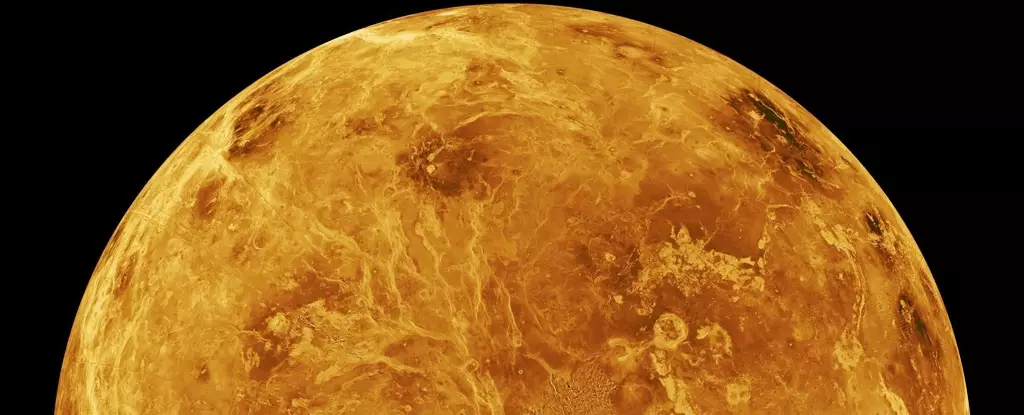The Solar System, in its infancy, was a chaotic environment, characterized by intense violent interactions among celestial bodies. Asteroids and comets bombarded terrestrial planets, leaving behind scars that would forever alter their surfaces. Mercury, Mars, and our Moon bear witness to this chaotic past, showcasing craters and impact basins as remnants of violent collisions. Earth too bears signs of earlier cataclysms, but its geological and erosional processes have obscured much of this history over time.
Venus, often dubbed Earth’s twin, presents a peculiar puzzle in this narrative. Unlike its neighbors, Venus boasts a surface peppered with impact craters, yet conspicuously lacks any substantial impact basins that exceed 300 kilometers in diameter. This absence sparked intrigue among scientists, who began combing through geological features for clues pertaining to Venus’ formation and subsequent evolution.
Recent investigations have illuminated a unique feature on Venus, the Haastte-Baad Tessera, which appears to challenge our understanding of what constitutes an impact structure. Detected using high-resolution imaging, this tessera covers an area approximately 1,500 kilometers across, generating excitement and questions about its origin. Geologist Vicki Hansen has emphasized the significance of these findings: if confirmed as an impact structure, it would not only be the largest of its kind on Venus but also offer a rare perspective into the planet’s geological history and early planetary processes.
The concept of impact structures has traditionally leaned towards expectations of large, gaping craters formed by celestial collisions. This new discovery prompts a broader definition; it suggests that the resulting formations might not conform to expected norms, emphasizing the complex interplay between the nature of the impacting body and the geological characteristics of the target planet.
To make sense of the Haastte-Baad Tessera, Hansen and her colleagues crafted a sophisticated model analyzing potential formation processes. They proposed that perhaps two colossal impacts occurred in rapid succession, striking a surface that was still soft and molten beneath a relatively thin crust around 3.5 billion years ago. This model aligns with our broader understanding of early terrestrial planets, which were likely dominated by molten interiors and thin crusts.
By theorizing that these impacts breached the delicate crust, magma would rise through the disruptions, bubbling up to create the circular features that define the tessera. This dynamic mirrors similar processes observed on other celestial bodies, such as Callisto, one of Jupiter’s moons, where a massive, multi-ring structure indicates a similar violent event.
The tessera terrain found elsewhere on Venus usually resides atop plateaus, but the Haastte-Baad Tessera showcases a different geological context. This deviation raises pivotal questions about the underlying mechanisms at play. Hansen elaborates that during a significant impact event, the mantle beneath may undergo partial melting, creating a geological layer denser than the standard mantle.
This denser, solid residuum can reside above molten lava, creating an intriguing buoyancy effect—like a floating mattress. As lava solidifies in this lifted position, if it subsequently drains away, the terrain may settle, leading to the lower-lying elevations observed in the Haastte-Baad. This explains why expectations for an impact crater focused on large depressions may not fully apply to early Venus.
Rethinking Impact Dynamics
The modeling suggests that substantial impactors, likely around 75 kilometers in diameter, were responsible for these formations. Although such substantial impacts are relatively rare in the Solar System, Earth is not devoid of similar geological features that may have developed through analogous processes. One such example is the dike swarm at Lake Victoria, which hints that Venus’s formation history may not be entirely unique.
Hansen’s revelations prompt the scientific community to rethink preconceived notions about crater formation on Venus. Instead of looking for typical deep holes, we must adapt our frameworks to account for the influences of early atmospheric and geological conditions on impact structures. The absence of a thick lithosphere, as seen on Mars or the Moon, significantly alters the expected outcomes of impact events.
The case of Haastte-Baad Tessera injects fresh complexity into our understanding of Venus, encouraging curiosity about its formation and evolution against a backdrop of cosmic violence. As ongoing research continues to unveil insights into Venus’s geological past, we are reminded of the intricacies involved in planetary science—where appearances can be deceiving, and significant events may not always show up in ways we anticipate. Exploring these surface features not only enhances our grasp of Venusian history but enriches our overall comprehension of planetary formation in the Solar System at large.


Leave a Reply